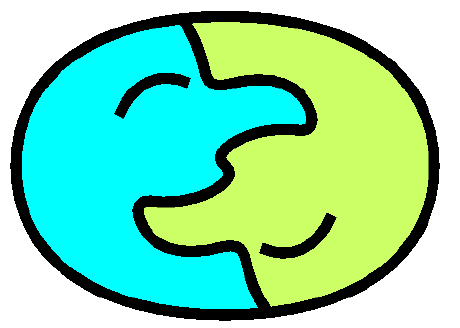Consortium for Robotic Integration
By Tom Veatch and Eric Pattison
We write, obviously, at the Dawn of the Robotic Age. At this time, one cannot buy optimized robot parts at the hardware store, or anywhere; Tesla reports that it must self-design and self-manufacture motors, actuators, joints, etc., to build the limbs and bodies of its general-purpose robots.
The current manufacturing ecosystem is not ready to support robotic system builders, who should be downstream integrators of upstream supplier provided components, in an integrated business ecosystem of many specialized businesses all contributing their particular capabilities to the globally desired outcome, a world of desireable, affordable, effective, human-compatible, labor-saving technological solutions: a world of robots.
We have worked on inverse kinematics for representation and combination of spatial information across networks of physical assemblies.
We believe that a leap forward in both technology and business will occur with a shared, standardized, certified and tested, set of common software and hardware interfaces and infrastructure linking space-capable machinery assemblies. Such interfaces will provide optimum integrability of robotic components such that high-performance robots can be developed by integrating compatible components from potentially a range of different providers, each with their own particular competitive advantages.
Then a commercial ecosystem of independent upstream suppliers and downstream integrators can work together to produce an unbounded variety of space-capable machinery: robots of all kinds.
We believe that the integration/interoperability standards for robot parts are the enabling factor for the nascent robot age.
We therefore propose a Consortium for Robotic Integration to develop, promulgate, and test/certify according to standards which ensure that parts integrate and that wholes can make intelligent use not only of their physical data but of sensor and actuator communications.
CRI should be a consortium so as to incorporate insights and improvements from industry sources. It should provide both standards and testing/accreditation so that suppliers have a target to build to and customers can rely upon interoperability.
The problem(s)
A space-capable functional system such as robot or mobile biological organism (animal) must internally represent itself and the impinging world according to spatial characteristics such as extent, direction, and trajectory and must control its own spatial characteristics such as position orientation and activity for its particular purposes, such as service or survival.
Hence a robot is a perception-action loop incorporating spatial information.
For a robot to detect its own activity so as to track and modify, that is, to control itself, means it integrates information from its parts into a view of the whole such that control algorithms may be applied.
A tree of limbs such as, starting from head, neck, trunk, arms-and-legs, sequences of jointed limbs and multi-limbed joints, each with their own actuators such as may be able to contract/extend or rotate left/right etc.,and sensors such as may be able to return pressure, temperature, accelerometer, joint angle, etc., values not only within end limbs like fingertips but between end limbs and a central processor.
This raises the problem of the inverse kinematics of a graph of elements including a hierarchy of abstraction for parts and things-containing-parts and of things-in-the-world which may be perceived by various sensor systems.
These are engineering problems, touched on in essays found at TomVeatch.com/nn, which also reviews Neural Network ideas also contributing Fuzzy Logic and time-domain-encoding of reverse kinematics:
CRI-relevant bits linked here:
- Backup Transforms.
- Twist-and-Bend Review.
- Twist-and-Bend Geometry.
- Robots and Space.
- Robotic Integration.
| Neural Network Studies Home | NN introduction | Newton Raphson, an alternative update rule for NN training | Fuzzy Logic Enhanced Neural Networks and their update rule | Twist-and-Bend, or framed stereo representation for spatial scenery | SRNN reverse kinematics: graph-based geometrical information systems | Dimensional Shuffle Transform |
